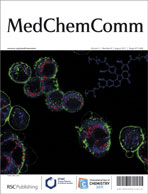Diabetic retinopathy is the leading cause of blindness to working-age adults. Complications of diabetic retinopathy include pericyte loss, basement membrane thickening of capillaries, microaneurysm formation, and an increase in inflammatory marker levels. We have shown that stimulation of β-adrenergic receptors by β-adrenergic receptor agonists significantly reduces key inflammatory markers in retinal endothelial cells (REC) or Müller cells cultured in high glucose, indicating that restoration of β-adrenergic receptor signaling may be protective to the retina. REC and Müller cells responded to increased glucose concentrations with an increase in inflammatory markers and apoptosis, which is reduced following treatment with β-adrenergic receptor agonists. In our initial studies, we evaluated the ability of optically active R-(−)-isoproterenol (R-1R-1), S-(+)-isoproterenol (S-1S-1S-1), and racemic mixture of (±)-isoproterenol (1), a non-selective β-adrenergic receptor agonist, to reduce the cleavage of caspase 3 and TNFα levels. We observed R-(−)-isoproterenol is more effective than S-(+)-isoproterenol, thus we developed novel optically active analogs of R-(−)-isoproterenol. Of the analogs, we found that compound 12 significantly reduced both caspase 3 and TNFα levels in REC, but did not reduce both markers in Müller cells. Binding data of compound 12 suggest that it is not a β-adrenergic receptor true agonist, but appears to decrease inflammatory levels and apoptosis in REC through an alternate mechanism.

You have access to this article
 Please wait while we load your content...
Something went wrong. Try again?
Please wait while we load your content...
Something went wrong. Try again?


 Please wait while we load your content...
Please wait while we load your content...